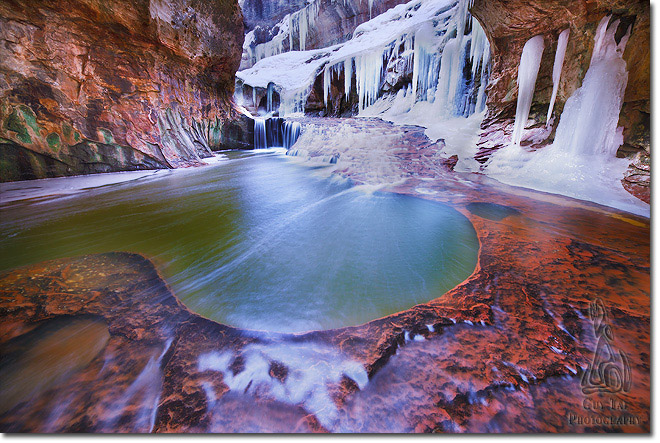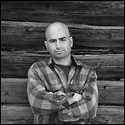The Essential Landscape: Lie Like You Mean It! |
"Why do most great pictures look uncontrived? Why do photographers bother with the deception, especially since it so often requires the hardest work of all? The answer is, I think, that the deception is necessary if the goal of art is to be reached: only pictures that look as if they had been easily made can convincingly suggest that beauty is commonplace." - Robert Adams
A few weeks ago, I commended a fellow photographer on an image of remarkable beauty: a pristine alpine lake reflecting a blazing red sky and rugged granite peaks. It looked so peaceful and inviting; the kind of place that might move someone to sit by and conjure poetry. His response was a casual and blunt "oh, the mosquitoes were terrible up there." Not long after, at a formal dinner party, I sat next to a someone who turned out to be a mathematician. We both had a few glasses of wine by then and I inquired about his work. Rather than mathematics, I got an earful about university politics and the challenge of securing grants. He then was silent for a moment, as if contemplating a difficult question, looked wistfully into the glass and said quietly "people don't realize that math is so beautiful".
I realized then that the two conversations, though seemingly unrelated, were, in fact, very similar. While we often tend to glamorize what we do, when considered objectively it may be quite far from ideal. Even in the presence of the grand, the mysterious, and the majestic, it is all too easy to miss the thread of true beauty woven into the fabric of what is a much larger experience and never quite so pure and obvious as we might like our audience to believe. In that sense, all photographs lie by omission.
I remember being criticized a while back when suggesting that the answer to the not-uncommon "did it really look like that?" is almost always "no." In fact, most photographers I know will respond with a very confident "yes" without giving it a second thought. These are the same people who personally set the saturation slider at 100, cloned out a rogue branch, or even the ones clearly recalling the sound of vehicles speeding along the road 50ft. away as they were carefully composing their "wild" scene to keep out the pavement. To be fair, most of them truly do believe the answer is "yes" because, while others may not have perceived it the same way, in their mind's eye it really did look "like that" to them. Right there is the crux of what we like to call visualization. Much like the photographer and mathematician, their passion for their work allows them to draw a clear line between the mundane and the beautiful, letting them filter and compartmentalize the two as distinct and separate dimensions of the same experience, that can be easily set apart. These are the true artists.

Then there are those who lie about lying; those who are unable to distinguish fact from interpretation but still try to pass their work as representing objective reality, rationalizing in their minds that their embellishments and shortcuts are acceptable because they are commonplace in the industry and despite knowing full well that their images, in fact, look nothing at all like what they saw; and their impact amplified orders of magnitude from what they actually felt. These are the artists in name only.
The casual viewer may never know the difference but it is most certainly there. As the old saying goes: it takes one to know one. Anyone harboring an artistic spirit will immediately recognize those works conceived of passion, contemplation, and love; those that carry meaning beyond their literal representation rather than a veneer of hype and artificiality. The difference may not be visible or quantifiable, but it is real and intuitive. You have to feel it to know it.
The most effective art tells the truth not by being literally descriptive but by representing the true state of mind of the artist. There is a vast chasm between images that are "romantic" and ones that are "romanticized" even if they appear similar or were created using the same methods. Try telling someone they look "beautiful", and on another day tell them they look "beautified" and you will experience the difference first hand.
If you want your work to represent your own truth, embrace the lies and lie like you mean it! No product of human conception can objectively contain all the dimensions of an experience. And if it could it would not be art since it will leave it up to the viewer to decide for themselves how to interpret and feel about it. In my mind, art and objectivity do not mix. An artist is one who creates meaning, who expresses their own personal sensibilities and relays their own inspiration through their work. If an image represents "reality" in an objective fashion, by definition it cannot be "art" since it expressly excludes the artist's personal interpretation.
Determining what amounts to "objective reality" is the business of scientists, journalists, and priests. Artists work in the subjective.
Comments on NPN nature photography articles? Send them to the editor. NPN members may also log in and leave their comments below.
 Guy Tal is a professional photographer and author residing in the state of Utah, in the heart of a unique and scenic desert region known as the Colorado Plateau. Guy teaches and writes about the artistic and creative aspects of photography and guides private workshops and individuals seeking the beauty and solitude of the canyon country. More of his works and writings can be found on his web site and blog at guytal.com. You may also follow Guy on Facebook or Twitter.
Guy Tal is a professional photographer and author residing in the state of Utah, in the heart of a unique and scenic desert region known as the Colorado Plateau. Guy teaches and writes about the artistic and creative aspects of photography and guides private workshops and individuals seeking the beauty and solitude of the canyon country. More of his works and writings can be found on his web site and blog at guytal.com. You may also follow Guy on Facebook or Twitter.